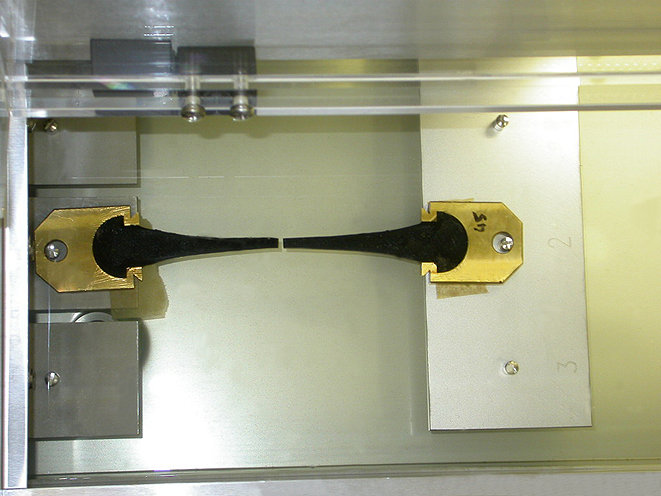

The ductility test of bitumen is one of the important tests that is carried out right before it is used for road construction. This is used to measure the elastic and adhesive properties of any type of bitumen sample. The ductility test is important as it provides a measure of the suitability of bitumen for use in road construction. Bitumen with high ductility is less likely to crack under repeated traffic loading and it is more likely to adhere well to the aggregate particles in the asphalt mix.
Through this blog, you will learn answers to questions like, Why do we use the bitumen ductility test? What are the different test methods for bitumen according to international standards? What are the factors affecting the ductility of bitumen? What are the procedures for the ductility test of bitumen? And what are the recommended values for bitumen ductility? And so on.
What is the Purpose of the Bitumen Ductility Test?
The ductility test on bitumen will help to;
1. Assess the Quality of Bitumen:
The ductility of bitumen is a good indicator of its overall quality. Bitumen with low ductility is more likely to be brittle and prone to cracking.
2. Compare the Ductility of Different Grades of Bitumen:
The ductility of bitumen varies depending on its grade. By testing the ductility of different bitumen grades, we can select the most appropriate grades for a particular application.
3. Investigate the Effects of Ageing and Weathering on Bitumen:
The ductility of bitumen will gradually decrease based on factors like age and weather. By testing the ductility of bitumen samples over time, we can track the effects of ageing and weathering and take steps to mitigate them.
Different Types of Ductility Test Methods for Bitumen in International Standards
A ductility test for bitumen can be performed using the following standard methods:
- AASHTO T51
- ASTM D133
- IS 1208
- ASTM D 6084
- JIS K 2207
- EN 13703
- IP 520
- EN 13589
What Are the Factors Affecting the Ductility of Bitumen?
There are certain factors that affect the ductility of the bitumen and here are some of them:
1. Grade of Bitumen
The grade of bitumen is determined by its penetration value of 25 °C. The penetration value is a measure of the softness of bitumen. Higher penetration values indicate softer bitumen, which generally has higher ductility.
2. Ageing and Weathering
Bitumen ages and weathers due to its exposure to sunlight, oxygen and heat. The process causes the bitumen to get harder and less ductile.
3. Temperature
Bitumen is a viscoelastic material, which means it shows the properties of both viscous and elastic. Viscous materials become less viscous with increasing temperature, while elastic materials become less stiff. As a result, bitumen becomes more ductile at high temperatures.
4. Admixtures
Some admixtures, such as polymers, can be added to improve their ductility. Polymers are long-chain molecules that can help to hole the bitumen together and make it more resistant to cracking.
5. Rate of Pull
The rate at which the bitumen is pulled during the ductility test can also affect the results. If the bitumen is pulled too quickly, it is more likely to break. On the other hand, if the bitumen is pulled too slowly, it may stretch too far before breaking.
Apparatus for Ductility Testing of Bitumen
- Briquette
- Knife
- Pulling device with distance measuring dial
- Brass plate
- Water bath
- Thermometer
Bitumen Ductility Test Procedure
Interested in knowing the procedures and results of bitumen ductility tests? Here are the procedures for the ductility test.
- Heat the temperature of the bitumen to 75 to 100 °C over its approximate melting point. This will make the bitumen fluid enough to be poured into the mould.
- Assemble the briquette mould on a plate made of brass and coat it with a mixture of dextrin and glycerin to prevent sticking.
- Pour the mould to the brim with the molten bitumen.
- Allow 30 to 40 minutes for the bitumen to cool at room temperature.
- Trim the excess bitumen from the top of the mould using a putty knife.
- Place the mould in the water bath at a temperature of 27°C.
- After 30 minutes, attach the briquette mould to the pulling device and stretch it at 50 mm/min.
- Record the distance at which the bitumen thread breaks.
Also find details about other bitumen test:
- Penetration test of bitumen
- Softening point test of bitumen
- Specific gravity test of bitumen
- Viscosity test of bitumen
FAQs
1. What is the standard ductility of bitumen for road construction?
The standard ductility of bitumen for road construction is 50 cm or more. However, for heavily trafficked roads, a ductility of 100 cm or more is recommended.
2. How do you test the ductility of bitumen emulsion?
Bitumen is heated to a temperature of 75 to 100 °C above its approximate softening point and it will be poured into a briquette mould. After 30 minutes, attach the briquette mould to the pulling device and stretch the bitumen at 50mm/min. Record the distance at which the bitumen thread breaks.
3. What is the standard test for bitumen?
Bitumens are typically characterised using two tests: penetration and softening points. Different grades of bitumen are specified using these two tests.
4. What is the viscosity of bitumen?
Viscosity is the opposite of fluidity. It is a measurement of the flow resistance. The higher the viscosity of liquid bitumen, the more it approaches a semi-solid state in consistency.

